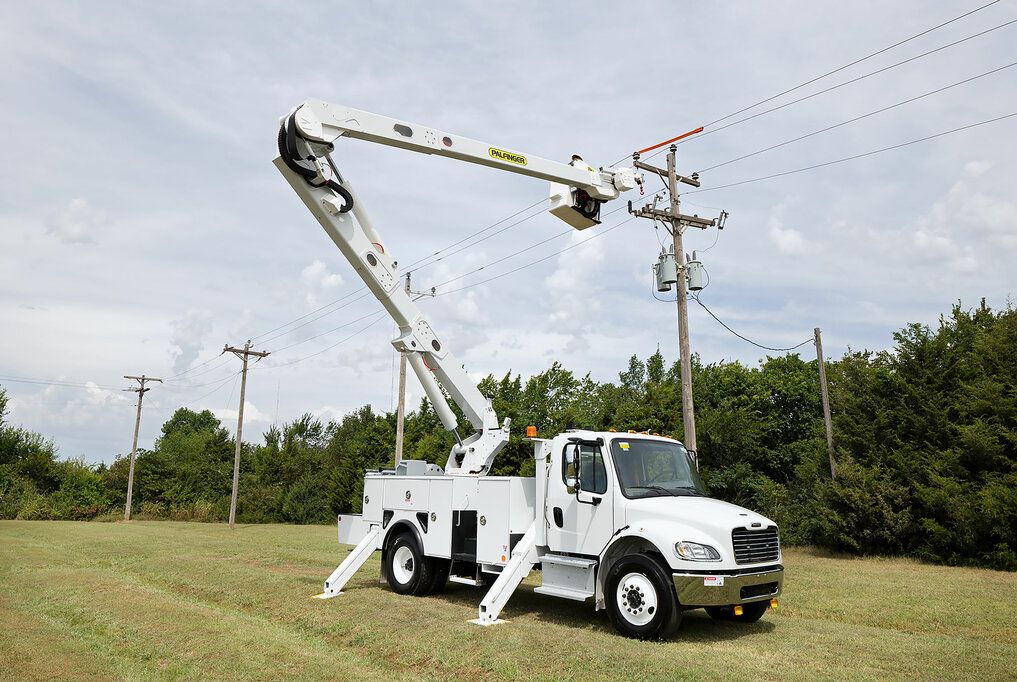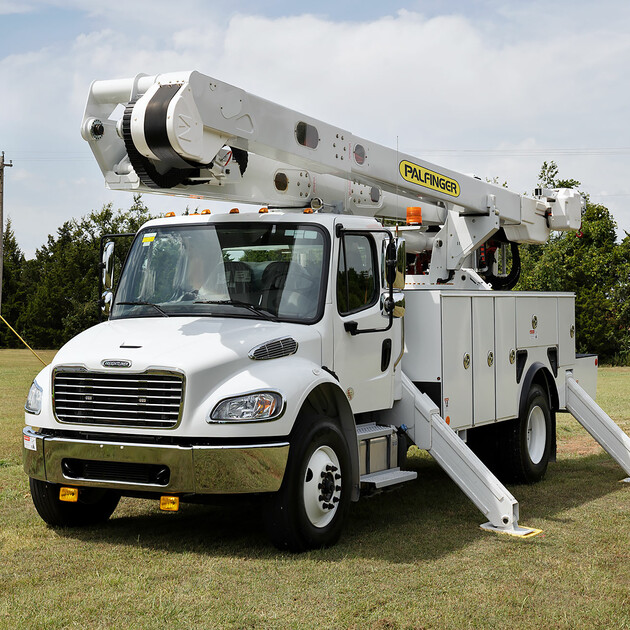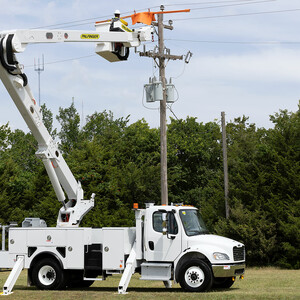
- Home
- News
Mantén en Óptimo Estado tus Carretillas Elevadoras Montables con estos 3 Sencillos Consejos de Mantenimiento
By Chris Shallenberg, Outbound Product Manager Aerial Work Platforms, PALFINGER North America

Crews using bucket trucks have already been hard at work in many communities restoring power and communications and doing cleanup as the result of storms, but it remains to be seen how many hurricanes will make landfall in the United States this season. Regardless, countless companies – and their dedicated line crews – stand ready to respond, when needed.
Preparedness though, is not a once-per-year activity. For many operations managers, fleet personnel and utility professionals working on the frontlines of storm response, this is a year-round endeavor, as many of them deal with more than just hurricane-related cleanup. Repairs and cleanup because of tornadoes, floods, derechos, ice storms and more all require rapid response and sending crews into demanding and potentially dangerous work environments to get the job done.
Given this, making sure your equipment is always ready to always handle challenging work environments – no matter the time of year – is essential if quick response times and safety are important to your overall mission.
Here are five things you can do to make sure your equipment and people are ready for the next storm:
Make Safety a Top Priority
The aerial and body package of your bucket trucks should be designed with operator safety in mind, as harsh weather conditions can make for a dangerous workplace. Your equipment should be configured to help reduce slips, trips, and falls wherever possible. This includes having non-skid materials on all walking surfaces and ensuring workers always have places for three points of contact when working on the bucket truck.
Lighting is also important. We recommend trucks with 4-point or 6-point strobes and ample compartment lighting as a standard for maximum visibility at night, and in all types of inclement weather. All PPE and safety equipment can easily become damaged during storm work, so it should always be inspected thoroughly afterward and replaced, as needed.
Training is Always Important
Providing good, safe equipment is critical, but your crews should also be well-trained given the difficult working conditions they may encounter. At PALFINGER, we pride ourselves in offering bucket trucks that are easy to use, but it does not take away from the importance of proper training. Make sure operators are fully briefed on the equipment’s features and capabilities as well as its limitations. Remember, familiarization with the equipment is different from being properly trained, so have your crews trained by an OSHA-authorized trainer to ensure proper – and safe – use occurs.
Keep Well-Maintained Vehicles
At PALFINGER, we know the chassis that aerial devices are mounted on are the workhorses of cleanup and repair efforts. This is why we provide operators with a recommended checklist of items to inspect visually and physically prior to each use. In short, it is important to pay attention to things that ensure your equipment can perform when it is needed most. Examples of this include:
- BATTERY: One example is making sure your truck battery is operating at peak efficiency. We recommend doing battery health tests, including checking all connections and making sure the battery can easily start the vehicle and support all electrical accessories.
- TIRES: Tires should also be inspected closely, including any spares, plug kits and air compressors. Remember, your trucks may be out in the field for extended periods with no access to repair shops, so anything to keep them self-sufficient on the service front is important, as storms can leave debris on roads that can damage tires.
- MAINTENANCE SCHEDULES: Consistently follow your own internal preventative maintenance schedules, or whatever has been provided by the chassis manufacturer; and consider proactively shortening any recommended maintenance timeframes to help address problems early.
En el mundo acelerado de la manipulación de materiales y logística, las empresas dependen de las carretillas elevadoras montables para una entrega eficiente de productos en los sitios de trabajo de los clientes, incluso al transitar por calles concurridas, espacios reducidos, terrenos difíciles y lugares complicados para maniobrar.
Como Gerente de Servicio de carretillas elevadoras montables PALFINGER North America, entiendo la importancia de mantener la maquinaria en condiciones óptimas. Aunque las carretillas elevadoras montables PALFINGER tienen una reputación destacada por su confiabilidad y bajo mantenimiento, aún requieren cuidados constantes. Su mantenimiento regular no solo extiende la vida útil del equipo, sino que también reduce el tiempo de inactividad y los costos operativos.
En este blog, compartiré tres consejos esenciales que los dueños de negocios, gerentes de flotas y operadores de montacargas deben priorizar para optimizar el rendimiento de sus carretillas elevadoras montables. Desde el mantenimiento del sistema de filtro de aire, la aplicación de rutinas adecuadas de engrase hasta la realización oportuna de cambios de filtros de aceite y combustible, estas estrategias te ayudarán a superar los desafíos de las operaciones diarias y a mantener en óptimas condiciones el funcionamiento de tus carretillas elevadoras.
Tip #1: Mantén Limpio el Sistema de Filtro de Aire de tu Motor Diésel
El motor de tu carretilla elevadora, el motor diésel Kohler de 3 cilindros, es el corazón de tu montacargas. Mantener un motor saludable depende en gran medida de suministrarle aire limpio. Para asegurar un mantenimiento óptimo del motor diésel, sigue estos pasos:
- Retira la tapa de la carcasa del filtro de aire para acceder al elemento del filtro.
- Inspecciona el filtro de aire para ver si está sucio.
- Reemplaza el filtro una vez que acumule suciedad significativa.
Un filtro de aire obstruido puede restringir el flujo de aire al motor, lo que resulta en un rendimiento reducido y posibles daños. Un sistema de filtro de aire bien cuidado garantiza que tu motor reciba el aire limpio necesario para operar de manera óptima, reduciendo el riesgo de reparaciones costosas.
Acerca de Bobby Campbell
Bobby Campbell es parte de PALFINGER North America desde hace más de 6 años y actualmente es Gerente de Servicios de carretillas elevadoras montables. Veterano de la Marina con siete años de servicio en roles activos y de reserva activa, Bobby cuenta con casi 30 años de experiencia técnica que abarca un amplio espectro de maquinaria, incluyendo aeronaves, grúas, montacargas y vehículos.







